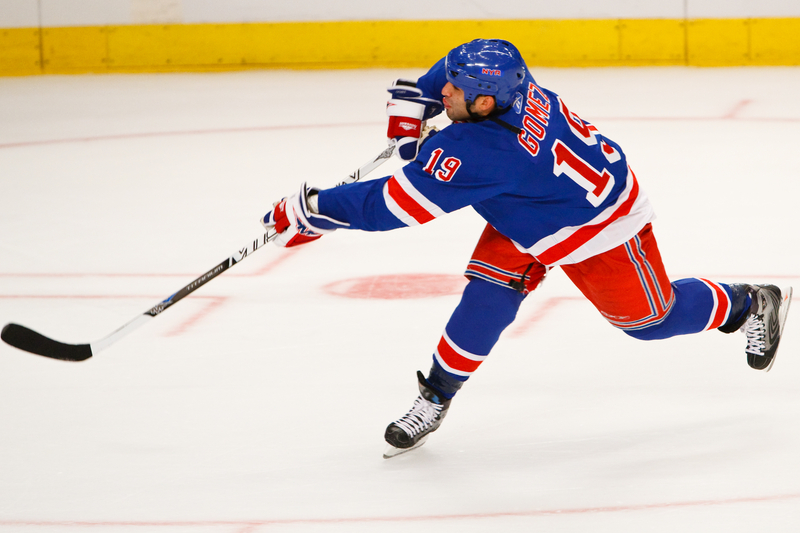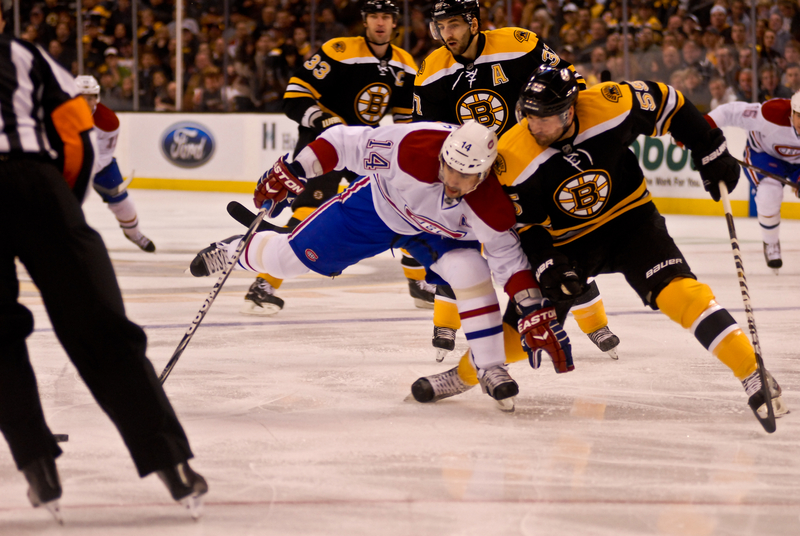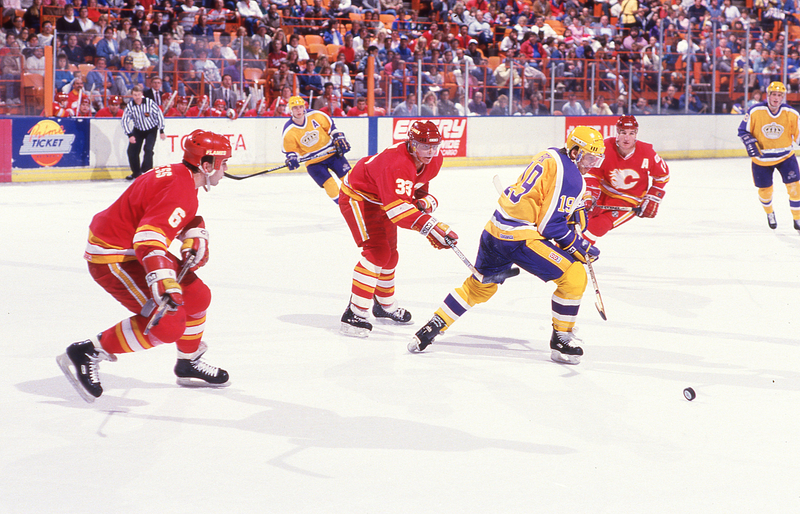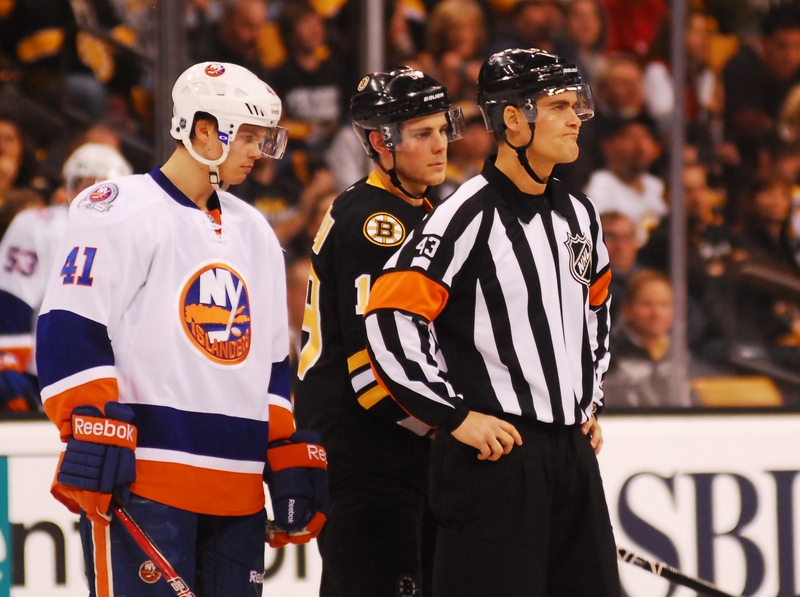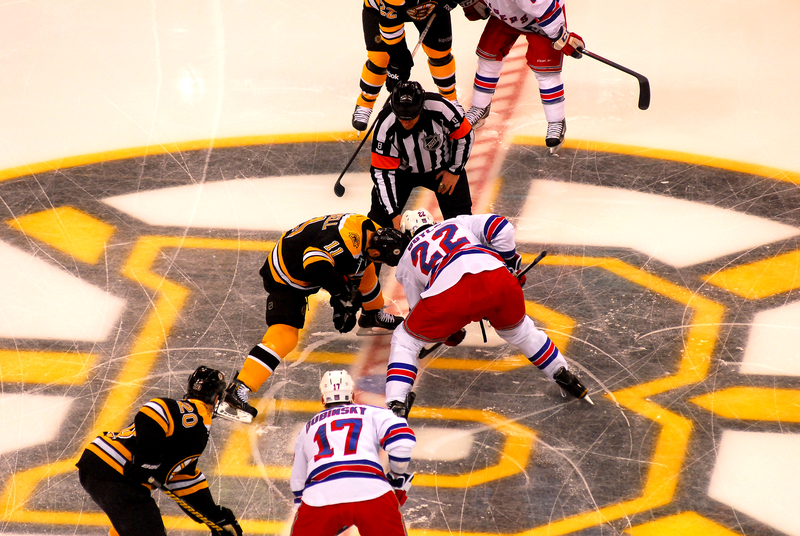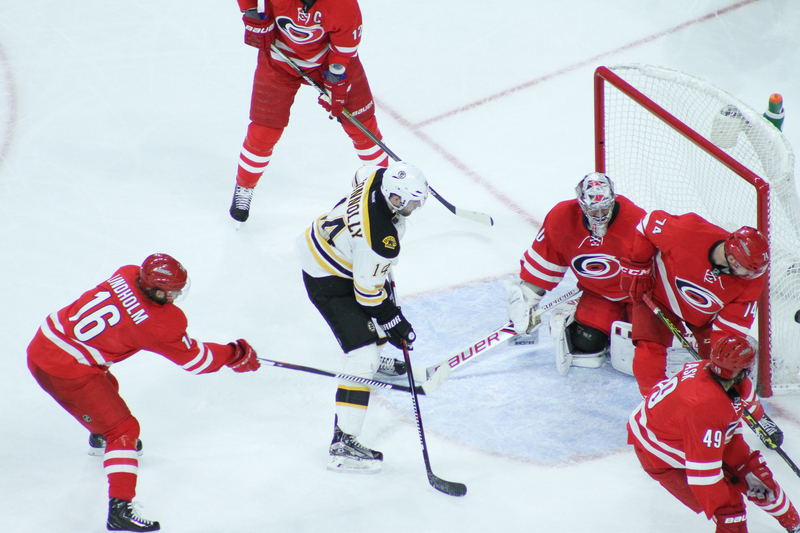Last updated on November 3rd, 2023 at 05:26 pm
An icing penalty prevents players from dumping the puck into the offensive zone, past the goal line in ice hockey. This rule is unique to hockey and often confuses new fans who might not be familiar with the penalty. Here are some of the basics you need to know about icing so that you won’t get confused when it’s called during a game.
Icing is a procedural penalty that happens several times throughout a hockey game. The penalty results in a complete stoppage of play, and the faceoff dot moves to the team’s defensive zone that drew the icing.
Functionally, icing occurs when a team passes the puck and crosses two “red lines.” There are two red lines in a hockey rink, the center red line and a red goal line at either end of the ice. If a player shoots the puck that crosses the center ice and the goal line at the opposite end of the ice without another teammate touching it, the play will result in icing.
Potential icing calls often include a race to the puck at the end of the ice. If a player from the same team that shot the puck “tags up” and touches the puck first, icing can be waived off. However, if a player from the opposite team touches it, they will trigger an icing call.
No-Touch Icing
If an icing call might occur during a game, players will race to the end of the ice as fast as possible to either call off the penalty or trigger the icing infraction. Skating fast to the other side of the rink can cause serious injury, especially if one player slips or causes a collision on the end boards. As a result, many leagues adopt no-touch or hybrid icing to keep players safe.
If a player ices the puck in no-touch icing, a player from the opposing team, usually a defenseman, will race back towards their net to trigger the icing. Classically, the two players will race to the goal line. However, this puts them both very close to the end boards, where injuries occur.
Hybrid icing makes players only have to race to the defensive faceoff circles to trigger the penalty. This reduces the opportunity for injury, making this call a lot safer for everyone on the ice.
How is Icing Different from Offsides?
Icing is very similar to offsides in hockey. These penalties slow entry into the offensive zone and improve defense in the game. While icing revolves around the red lines on the ice, offsides involve the blue lines.
The Hockey Writers explain the offside rule clearly in hockey. A player must be behind the blue line and wait for the puck to pass before entering the offensive zone. This rule prevents forwards from waiting for line-drive passes that could help them score in front of the net.
Who Calls Offsides on Icing?
Several different officials have the right to call penalties during an NHL game. Referees have an orange armband that designates them as the head of the officiating team. Two linemen help judge icings and offsides. A linesman gets his name because he typically straddles one of the lines during play, either the blue line or a red line, to evaluate if offsides or icing occurred.
Goalies can also help linesmen know if the icing call occurs. If the puck crosses the goal line closest to them, a goalie will usually lift their glove. That shows the officiating team that icing may occur, depending on what player reaches the puck first. If the offending player reaches the puck first, there is no infraction, and the goalie will drop their glove.
What Happens After an Icing or Offsides?
Unlike most penalties in hockey, icing and offsides don’t result in a player going into the penalty box. Instead, there’s a stoppage in play, and there’s a new faceoff that’s disadvantageous to the offending team. With icing, the puck is placed deep in the defensive zone to the right or left of the goaltender.
In offsides, the referee places the faceoff just outside the blue line. Referees pick which faceoff dot is used based on where the original penalty took place.
When Can Hockey Teams Ice the Puck?
You can ice the puck when a team is shorthanded and on the penalty kill. This allows the defending team to break between offensive cycles and help facilitate line changes during high-stress periods.
Many hockey players find returning to their defensive zone during a power play is an opportunity to regroup and develop a more effective strategy to get a goal. Returning to the defensive site can allow some tired players to cycle off the ice and help them develop a concerted push to score.
Conclusion About Icing in Hockey
In summary, icing occurs in hockey when one team shoots the puck down the ice and passes their opponent’s red line. However, an exception to this rule is when one team is short a player due to a penalty. If that is the case, the short-hand team can ice the puck to take time off the clock and prevent the other team from scoring at their net.
Before icing became a rule in the NHL, teams would shoot pucks towards the opposing team’s goal line unchecked, always trying to get the next big breakaway. Today, icing helps the game flow better and makes it more enjoyable to watch. Not only does the game flow better, but the league is making an effort to reduce injuries, which is always essential.
Similar Posts
Why is There Fighting in Hockey?
What is a Power Play in Hockey?
How Long is a Hockey Intermission?
What is a Forecheck in Hockey?
What Does Plus-Minus Mean in Hockey?
What is a Penalty Shot in Hockey?
Greg Kristan, owner of The Stadium Reviews, LLC and TM Blast, LLC, brings his extensive experience visiting over half of the MLB ballparks, along with numerous MLS, NHL, NBA, and NFL venues, to provide in-depth coverage on the bag policy, food options, and parking. He has also been interviewed about his experiences on several sports podcasts.

